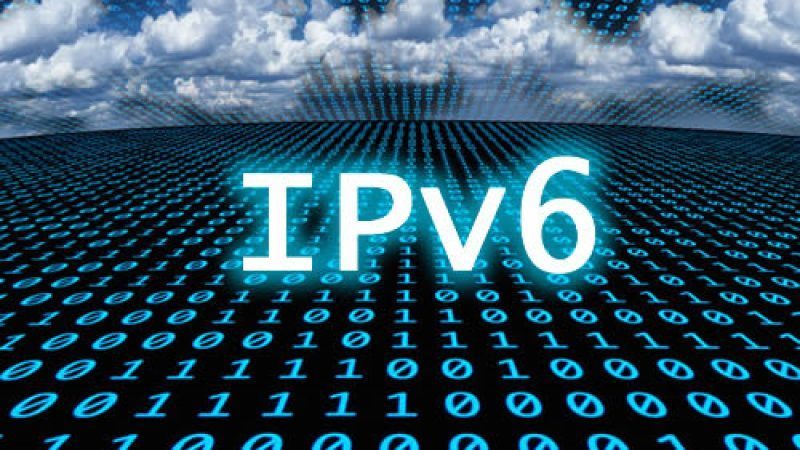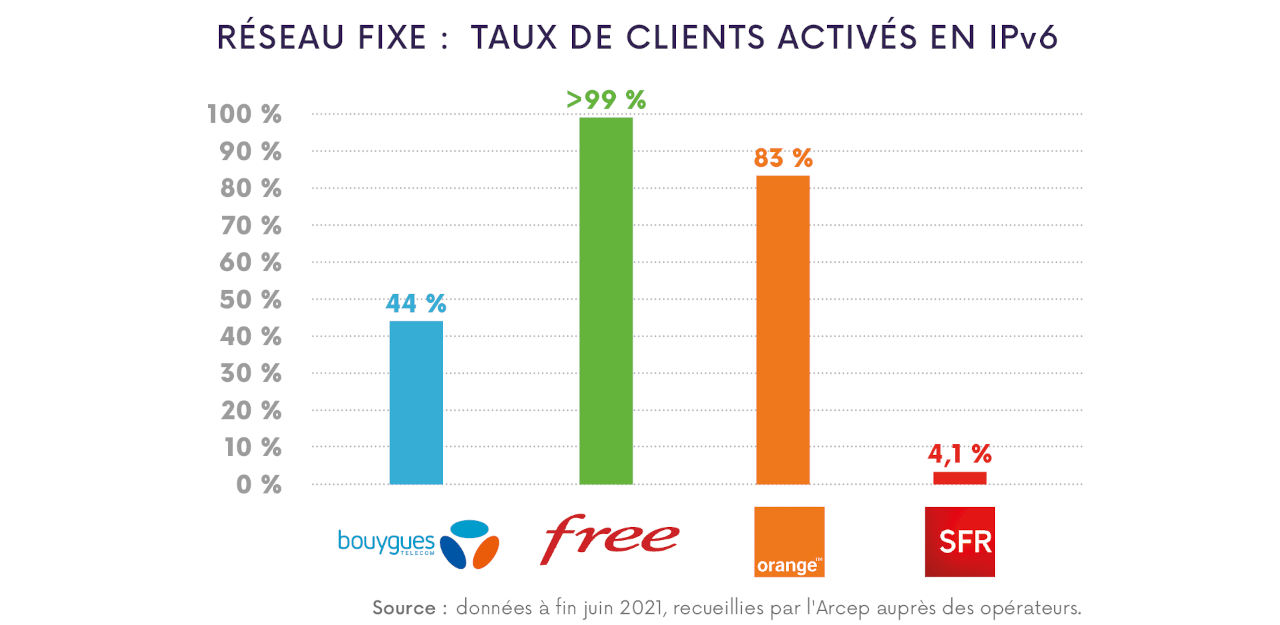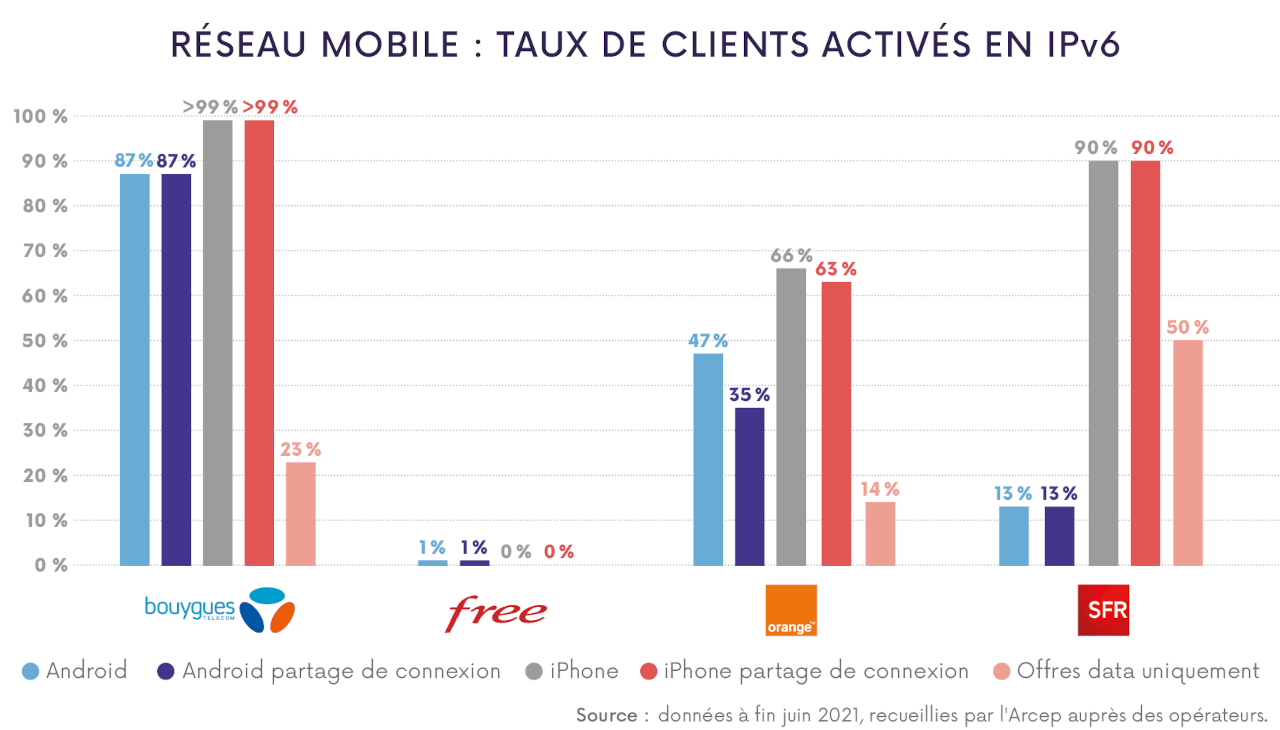
Arcep provides an update on users switching to IPv6. If you select Free as an example of fixed networks, the Xavier Niel player still has to do work on mobile networks.
Arcep has just published its new report on the transition to IPv6 operated by Orange, Free, Bouygues Telecom and SFR, at the end of June 2021. There is still work to be done, including that of Xavier Niel operator. So Arcep invites operators to “Continue their efforts to accelerate the transition”.
Free very close to 100% IPV6 on landlines
On fixed networks, Free is the only one leaning towards 100%, with a rate above 99% (versus exactly 99% during the last barometer on June 30, 2020). Orange follows with 83% of subscribers having migrated to IPv6 as of June 30, 2021 (versus 78% the previous year). We find Bouygues Télécom in the back at 44% (versus 28% over the previous metric) and finally in the back of the SFR package at just 4.1%, up from 1.6% the year before)
On mobile, the situation is the opposite for free
On mobile networks, the situation is completely different than for free. ARCEP also notes that it is particularly unfortunate that Free Mobile does not activate IPv6 clients by default on its mobile network, which results in a very low percentage of activated IPv6 clients (1% for Android and 0% for iPhone) and has not been able to provide Forecasts of upcoming activations.
Bouygues Telecom, for its part, has implemented a significant rollout on mobile networks, with 87% of Android customers and more than 99% of iPhone customers having been activated in IPv6 by mid-2021. Also of note is IPv6 deployment on the Orange mobile network (47 activated % of Android clients and 66% of iPhone clients are in IPv6).
SFR, for its part, has done an impressive rollout of IPv6 for its iPhone customers. The rate of iPhone SFR clients activated in IPv6 thus increased from 0% in mid-2020 to 90% in mid-2021. With Android clients activating in IPv6 in mid-2021 (13%) in addition, expectations for deployment to Android seem unsettled. Sufficient to deal with the shortage in IPv4, SFR is encouraged to speed up Android device activations in IPv6.
What does IPV6 bring compared to IPV4?
In fact, IPv4 uses 4 sets of 3 numbers ranging from 0 to 255 (192.168.1.1, for example) and limits the number of addresses to about 4 billion. A number that may seem enormous at first glance, but it poses a problem with the democratization of the Internet in the world and the explosion in the number of devices connected to the Internet. This requires the use of subnetting, i.e. a single IPv4 address can be used for the entire household (computers, mobile phones, connected TV, etc.).
With IPv6, we end up with 8 groups of 4 hex characters which can be numbers between 0 and 9 or letters between a and f (1234:abcd:1234:abcd:1234:abcd:1234:abcd , for example). Thus we have about 3.4 x 10-38 possibilities (2-128), or 1,700 billion times more grains of sand on Earth (2 x 10ˆ26). Suffice it to say we have been quiet for a while. No need for a subnet anymore. Each device can have its own IP address.

“Devoted gamer. Webaholic. Infuriatingly humble social media trailblazer. Lifelong internet expert.”







